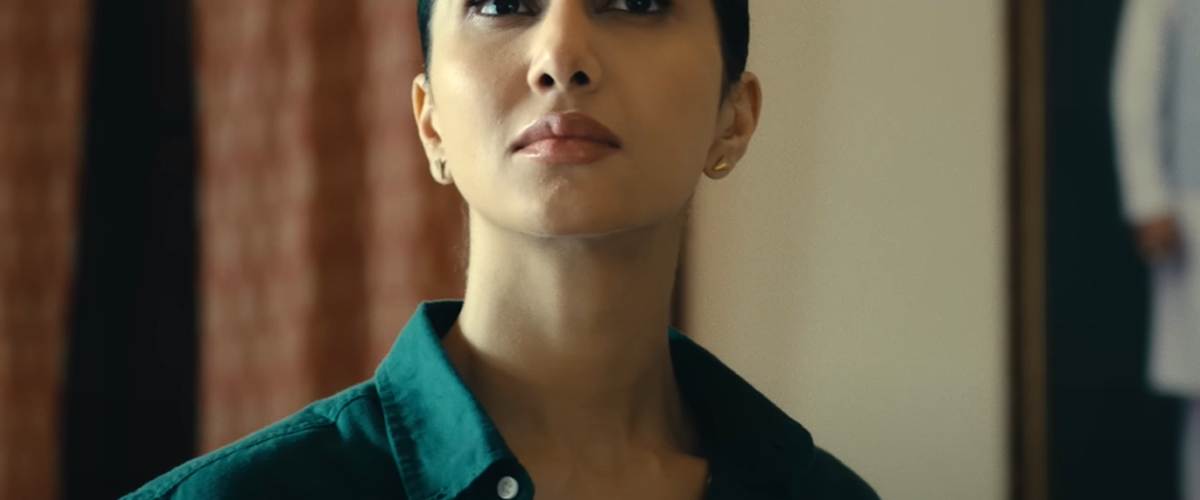Mandala Murders Review: Myth, Gore, and Twisted Justice

Mandala Murders launched on Netflix on July 25, 2025. It marked Vaani Kapoor’s OTT debut and delivered a gripping cocktail of mythology, murder, mystery, and madness. The series arrived with high expectations due to its unique genre blend and backing by YRF Entertainment, the production house behind hits like The Railway Men.
The series, written and directed by Gopi Puthran along with Manan Rawat, tells a complicated story that spans generations. It follows a series of brutal killings in a fictional town, Charandaspur, where body parts of the victims go missing. These murders follow the design of a mandala, a symbolic spiritual diagram, and all tie into a cult’s bizarre goal of creating a god.
Plot Summary
The story opens in Charandaspur, a grimy town soaked in secrets and ancient horrors. A string of murders starts unsettling the town. The killer removes body parts from each victim and arranges them in a pattern resembling a mandala.
Rea Thomas, played by Vaani Kapoor, arrives in Charandaspur as a CID officer. Rea carries her own trauma and seeks answers about her past. She joins forces with Vikram Singh, a suspended Delhi police officer, played by Vaibhav Raj Gupta. Vikram returns to his hometown, unaware of the twisted fate that awaits him.
Together, they investigate the murders. They discover the involvement of a secret society called Aayastis, which plans to bring back an ancient deity named Yast. The cult believes that by collecting perfect body parts and arranging them in a mandala, they can summon Yast and change the world.
The cult leader, Ananya Bhardwaj, also happens to be a rising political figure. She manipulates religious beliefs to win loyalty and elections. Her grandmother, Rukmini Devi, originally founded the cult. Ananya wants to complete the ritual where her grandmother failed.
Rea and Vikram’s investigation exposes the horrifying reach of the cult. They uncover secret labs, mutated survivors of failed experiments, and a machine built to fulfill “divine” wishes. The deeper they dig, the more their own pasts start connecting to the cult’s madness.
Performance Review
Vaibhav Raj Gupta gives a strong, grounded performance. He plays Vikram with restraint, sorrow, and conviction. He doesn’t shout or overact, yet his eyes reveal pain and purpose. He keeps the emotional core of the story alive even when the plot becomes too complicated.
Vaani Kapoor surprises with her intense portrayal of Rea. She plays a layered role—both cold and broken—without melodrama. While some critics say she needs more emotional depth, she still handles the physical and investigative parts of her role well.
Surveen Chawla plays Ananya with ambition and pride. She stands as a modern politician who hides her cult beliefs under expensive sarees and political speeches. Surveen brings a cold menace to her scenes, although the script doesn’t explore her motives deeply enough.
The supporting cast includes actors like Shriya Pilgaonkar, Rahul Bagga, and Raghubir Yadav. Each brings authenticity to their characters. Together, they create a believable world steeped in shadows and secrets.
Themes and Symbolism
The show mixes mythology, occult science, police procedural, and political thriller. It explores how belief systems—whether religious or scientific—can turn dangerous in the wrong hands.
The mandala, usually a peaceful spiritual symbol, turns into a symbol of horror. The cult believes they must build a perfect human body, part by part, as an offering to awaken a forgotten god. They ignore humanity for the sake of divinity. That conflict—between science and faith, reason and obsession—drives the narrative.
Rea’s family history mirrors this theme. Her grandmother, Nandini, once joined the cult but turned against it. Rea’s fight becomes personal. She doesn’t just fight the cult; she fights a legacy of violence and control.
The show also speaks about generational trauma, political greed, and misuse of religion. It draws attention to how cults prey on the weak and how powerful people manipulate symbols for their gain.
Visuals and Sound
The show looks stunning and disturbing. The production team uses dark forests, crumbling mansions, and blood‑stained temples to create a tense mood. Every scene feels heavy, filled with dread and mystery.
The gore stands out. The show doesn’t shy away from showing blood, surgery, and dismembered bodies. These visuals shock in the beginning. But by the sixth or seventh episode, they start losing impact due to repetition.
The sound design helps maintain suspense. Background music builds tension in chase sequences and cult rituals. However, it never becomes a memorable part of the show like in some great thrillers.
Pacing and Writing
The first half of the series grabs attention. The mystery unfolds steadily. Each clue reveals something bigger. The murders seem random at first but slowly form a pattern that fascinates and frightens.
However, the second half stumbles. The writers introduce too many ideas—quantum machines, spiritual possession, wish-granting technology, and secret histories. The plot starts to feel overcrowded.
The final episodes rush through major reveals. Characters discover huge truths in seconds. Emotional moments come and go without depth. Rea and Vikram’s bond, for example, could have become a highlight. But it remains underdeveloped.
The show ends with Rea stopping Ananya’s ritual. She rescues Vikram, who the cult chose as their final sacrifice. But even after stopping the ritual, questions remain. Some cult members escape. Their machine still runs. The story hints at a possible second season.
Critical Reception
Critics across India gave mixed reactions.
Some praised the ambition of the show. They liked how it combined religion, science, and horror. They appreciated the performances, especially Vaibhav Raj Gupta’s.
Others criticized the show for being overstuffed and confusing. They felt that the plot became chaotic in later episodes. Some said that the creators used shock value instead of building real tension. The repeated use of gore dulled the story’s impact.
Fans on social media called it “entertaining but flawed.” Some admired the concept. Others got lost in the complexity. Many hoped for tighter writing in future seasons.
Final Verdict
Mandala Murders offers a bold, twisted journey into India’s spiritual and political underworld. The series dares to explore dark themes and create a rich, haunted world.
Its biggest strength lies in its ambition, world-building, and performances. But it also suffers from excessive ideas, uneven pacing, and emotional gaps. It starts strong but finishes in chaos.
If you enjoy dark thrillers with mythological roots and don’t mind disturbing visuals, you will find Mandala Murders fascinating. But if you prefer tight storytelling and emotional clarity, this series might frustrate you.
Rating: 3 out of 5













